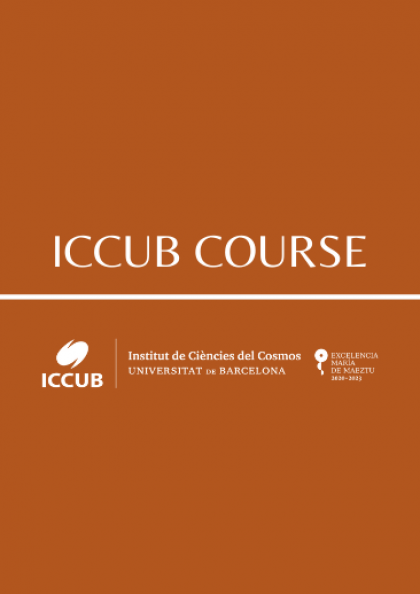Advanced topics in statistical methods for experimental sciences
NOTES
REGISTRATION: Send an email to jose@fqa.ub.edu . (August is a holliday period in Spain, hence registrations might take 3 or 4 days to be confirmed).
REQUISITES: Degree in Physics or engaged in graduate studies in Science or Engineering.
SCHEDULE: September 5th to 16th, daily from 15:00-17:00
Bibliography
W.T. Eadie, D. Drijard, F.E. James, M. Roos and B. Sadoulet, “Statistical Methods in Experimental Physics” Amsterdam: North Holland (1971).
N.R. Draper and H. Smith, “Applied Regression Analysis”, John Wiley & Sons, 3rd edition (1998).
On the internet, the Particle Data Group reviews:
http://pdg.lbl.gov/2014/reviews/rpp2014-rev-statistics.pdf
http://pdg.lbl.gov/2014/reviews/rpp2014-rev-probability.pdf
In Portuguese:
O. Helene e V.R. Vanin, “Tratamento Estatístico de Dados em Física Experimental”, Edgard Blucher, 2ª ed. (1991).
O. Helene. “Método dos Mínimos Quadrados com Formalismo Matricial”, Editora Livraria da Física, 2006
V.R. Vanin, P. Gouffon e Otaviano Helene, “Análise Estatística de Dados em Ciências Experimentais”, Editora Livraria da Física (1996).
Objectives: Learn experimental data statistical reduction methods, and their optimal properties in the framework of the probability theory.
Motivation: Modern data acquisition programs generate a wealth of information about the systems under study, which is better explored when the experimentalist knows how to apply the statistical methods to scientific experiments. This course introduces the student to the theoretical framework of statistics and shows its application to problems faced by the experimentalists.
Suggested calendar – 10 lectures
1) General Concepts. Parametric methods of statistical analysis vs. Nonparametric methods. Probability definitions used in the statistical analysis of experimental data. Mathematica: basic language.
2) The most common probability functions and their applications. Uncertainty propagation: from simple cases to full variance-covariance matrices. Confidence intervals. Mathematica: basic statistical functions.
3) Fitting parameters of linear models: the least squares method (LSM). Fitting parameters of linear models.The2 test and the reliability of the parameter variances.
4) Reducing measurements of a single quantity: the statistics derived from the normal distribution (t, 2, F). Properties of the LSM estimates. Interpretation of the covariance. Basic programming in Mathematica and simulation of estimators.
5) Statistical inference and hypothesis testing. Tests based on the normal distribution (z, t and F). Mathematica: pure functions and their applications.
6) Properties of the estimators. The minimum variance bound. The central limit theorem. Mathematica: partitioning programs.
7) Matrix approach of the LSM. The construction of design matrices. Taking into account the correlations between the data and their effect on parameter estimates. Mathematica: importing and exporting data.
8) The maximum likelihood method. Fitting parameters of non-linear models.
9) Applications of the LSM. The2 test and the choice of significance levels when testing hypothesis. Errors type I and type II. Application examples.
10) Problems in which the independent variable has a sizable variance. Statistical analysis of data in several steps - the additivity of 2. Propagation of the uncertainties in parameters measured externally to the experiment. Application examples.
